
Don’t overlook how important this tool is when you’re renovating or building. It’s at the source of most disputes, errors and costly mistakes. Here’s how to use it well instead …
We have many tools at our disposal when it comes to designing, building and renovating our home.
However, most disasters, nasty surprises, unexpected challenges and even just minor headaches, usually come down to the failure of just one important tool – and it’s one we use every step of the way.
What is it? This one crucial tool?
Communication.
When done well, it helps projects run smoothly, achieve great outcomes and create homes that are a joy to live in.
And yet, when it’s not done well, it is the thing that can really throw your project off its tracks – with permanent ramifications.
Did you know that communication, and its failure, is at the root of most litigation cases and disputes in residential building? Don’t let it trip you up on your project.
Communication is a crucial tool and getting it right involves putting together various pieces of the puzzle to ensure the picture you wish to create is clear to all involved. In this article, I’m going to take you through some of the most important elements of communication for your project, and how to use them successfully to get great results, and save yourself headaches along the way.
Communication Tool 1: Choosing your team
Whether you’re an owner-builder doing as much of your project as you can, or you’re just managing the project, chances are you’ll be assembling some sort of team to help you deliver your home. Selecting them well can be key to helping your project run smoothly, because it expedites communication from the get-go.
Have you ever had a conversation with someone who didn’t share your values, your sense of humour, or your outlook on life? It can be incredibly frustrating and confusing because you just don’t see eye-to-eye. So, when selecting team members, look for like-minded individuals and companies. When you do this, you immediately put yourself ahead.
If you can find people and companies to work with who do see eye-to-eye with you, and particularly understand your vision of your home, you will cut out lots of hard work for yourself. You’ll be speaking the same language as those who are helping you, and you will be aligned with support and assistance that will propel you faster and more smoothly towards achieving your outcome. What’s more, you’ll have a lot more fun doing it, because you’ll be around people you actually enjoy spending time with.
Your team needs to have communication facilitated between them also. Make sure they know when to involve you, and when to just let you know the outcome. This is ultimately up to you, but just be sure you set the expectations.
Communication Tool 2: Nail your brief
Your brief is the formal communication piece to explain your vision for your project. You can use it for the duration of your project to help everyone be on the same page as you. It becomes the means by which you spread your vision, and the benchmark to check yours and your team’s performance by.
However, ultimately what you say, or write, in terms of describing what you want for your own project, has to be clear to you first. Then you can explain it to someone else, and work to make sure that what he or she hear and understand is what you say and what you mean.
So how do you get clear about your brief?
My recommendation is to articulate some ideas around these types of questions, as you create your overall picture for your home:
Who are you, and who are your family (if they’ll be living in the house too)? How many and what are their ages – and will this be likely to change (new babies, kids moving out etc)? What are your interests?
If you are renovating – what do you know about your existing home? Its age and condition? What do you love about it, and what do you dislike about it? The house as well as the land it sits on?
What’s your overall vision? Why are you doing this project and what are you hoping to achieve? What are your big goals for your project?
Now get specific. How do you envisage your home when it’s finished? What is your general concept and how do you want it to feel? How do you want to feel in it and what are you most looking forward to when it’s completed?
The practical stuff. List spaces and rooms, and break it down into priorities of must haves, and wishlist items.
Ensure you have a budget and identify it.
Think about how you’ll deliver it – how you will build it, who will be on your team along the way.
What is your program? What is the timeframe you wish to deliver this in and do you have a deadline you’re working to.
- Remember that pictures are also very useful in representing and communicating your brief, so don’t be afraid to create vision boards, or scrapbooks – digital or paper. (Pinterest and Houzz are both great tools for this.)
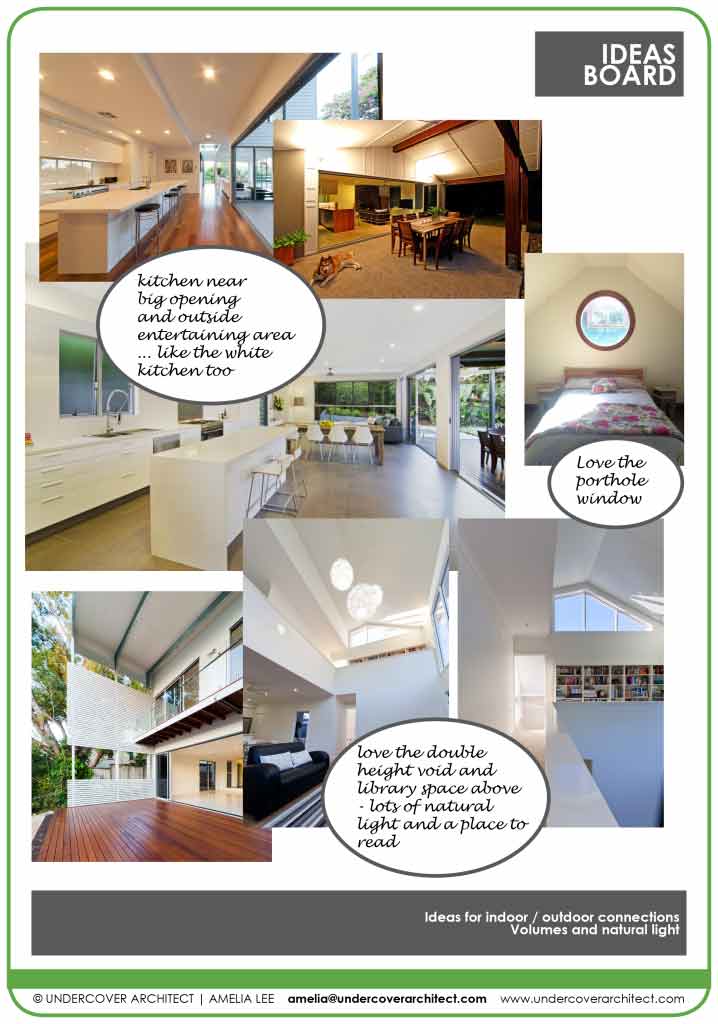
Ideas boards assembled by Undercover Architect from images photographed / drawn by Amelia Lee, or photographed by Jacob Hutson, DC8.
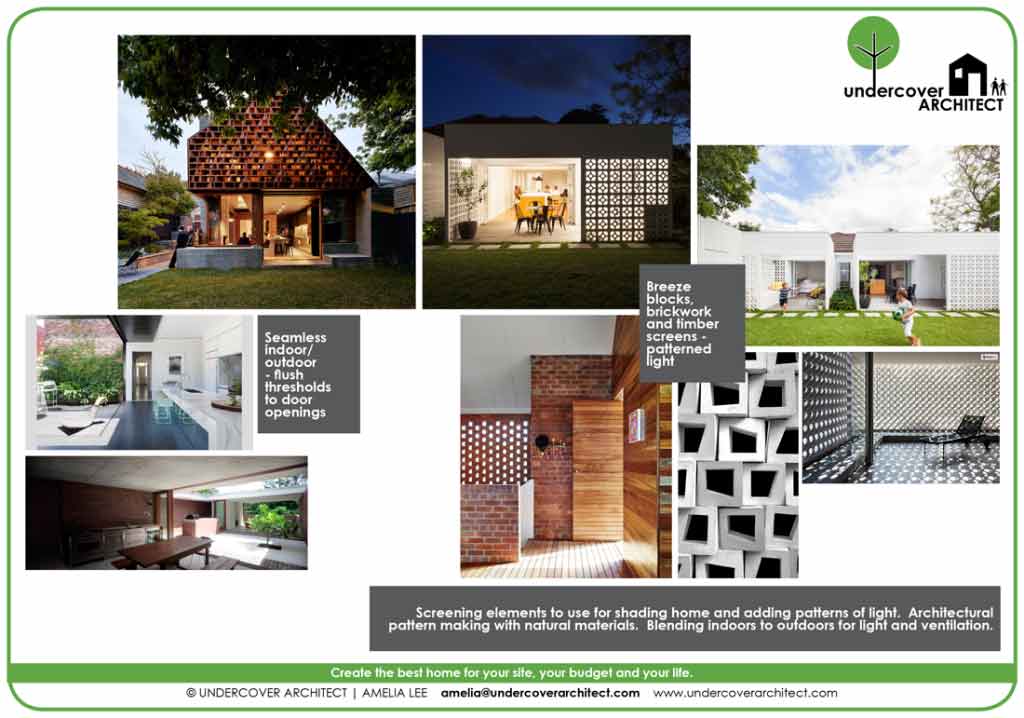
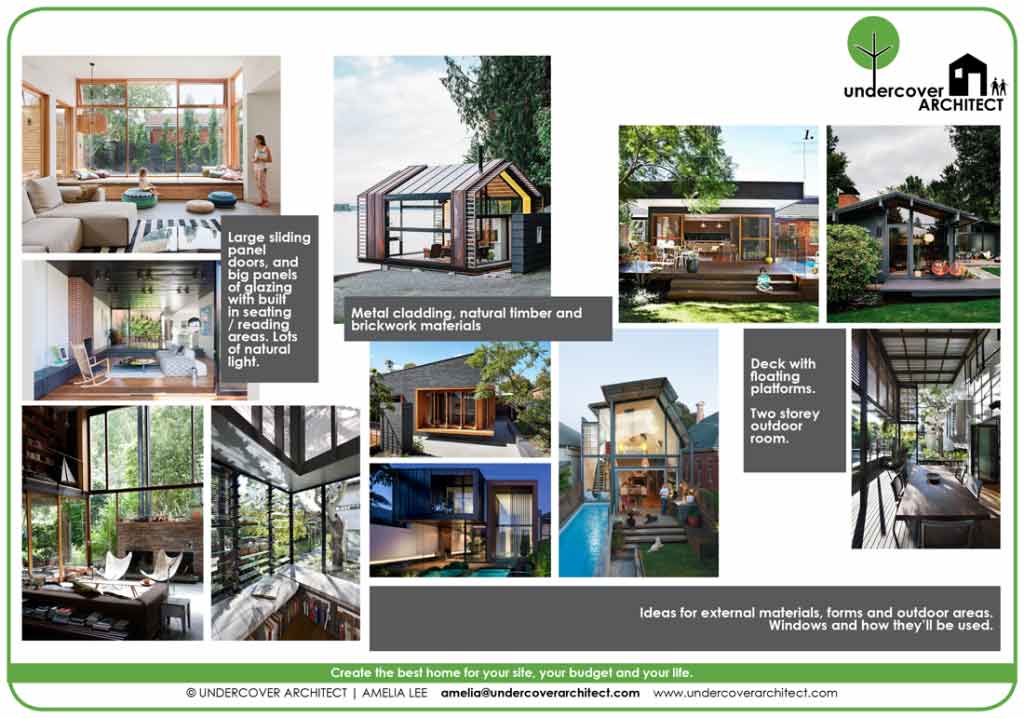
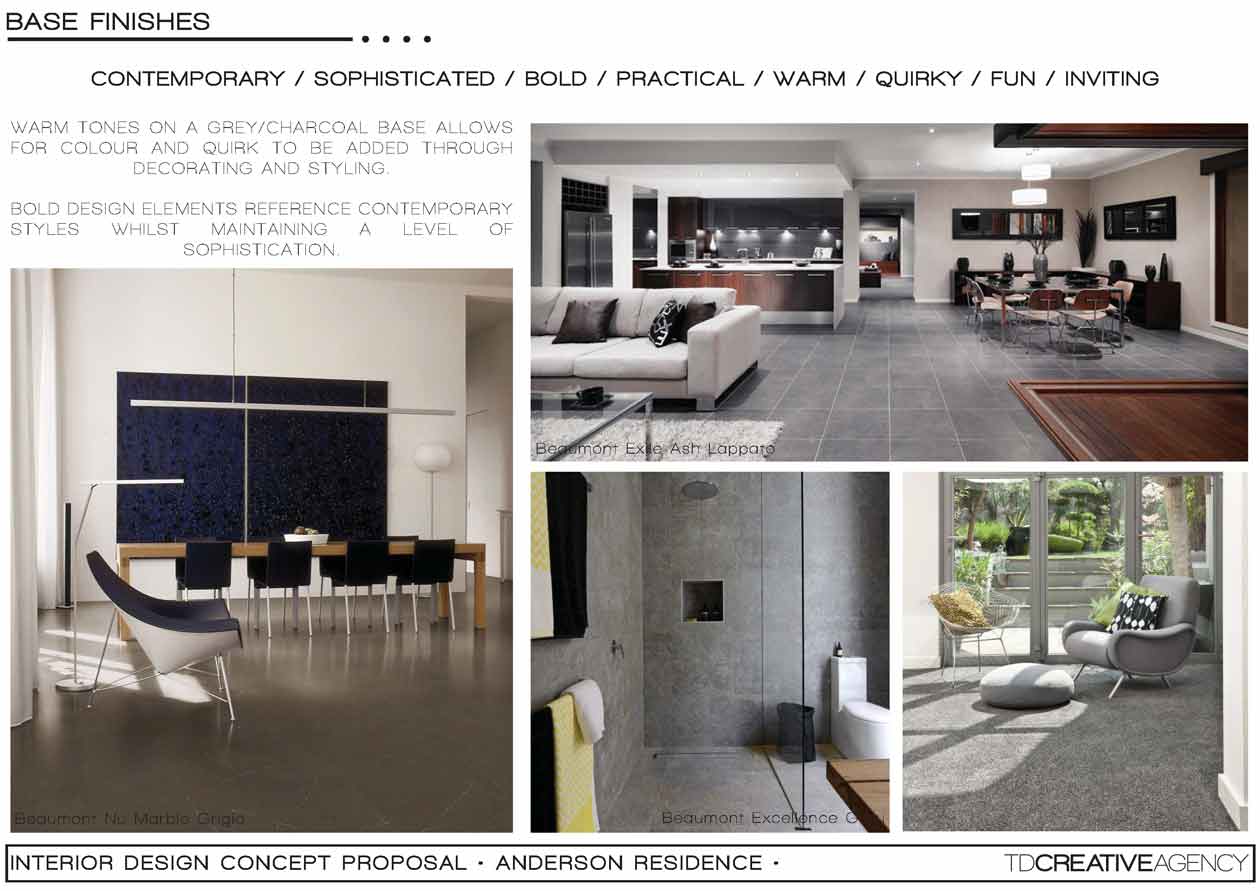
Other ideas of Ideas or Vision boards – not included in The Owner Builder article. First two were assembled by Undercover Architect [All images sourced from Houzz.] Last one is by TD Creative Agency, assembled from online resources for the Anderson Project.
The key is creating a very clear picture in your head. This will help you communicate this vision to everyone else, so they have clear insight and can work with you to achieve it. This step is essential before you get started with anything else.
Communication Tool 3: Understand the language you need to speak in
In home design, building and renovation, the language that the industry uses is predominantly a drawn one.
Having clear and correctly done drawings is crucial in getting what you want in your project. It explains your wishes, desires and intentions, in an industry-standard language. Included in drawings will be notes, and specifications that will also help you achieve the level of finish and quality you are seeking with your project. So get them done professionally, by someone who can translate your vision into the language that the industry understands and speaks in.
There’s also a fair amount of industry terminology. Don’t be afraid to ask when you don’t understand, and follow up where you need to be more informed. The Internet will be your best friend in sourcing a fast education in building terminology!
Some links for building terminology / glossaries:
mrenthusiast.net.au/a-z-of-building-terminology/
Common Construction Terms from Charles Sturt University
Next blog: Communication Part 2
In the next blog I’ll take you through another 4 important communication tools to use for construction of your home build or renovation that are sure-fire methods to keep things on track.
I wrote this article for the the June/July issue of “The Owner Builder” magazine, where it was first published. It was titled “Communication – the key to a happy, successful project”. This is part 1 of 2 blog posts outlining the tools you can use to make communication work in your project.
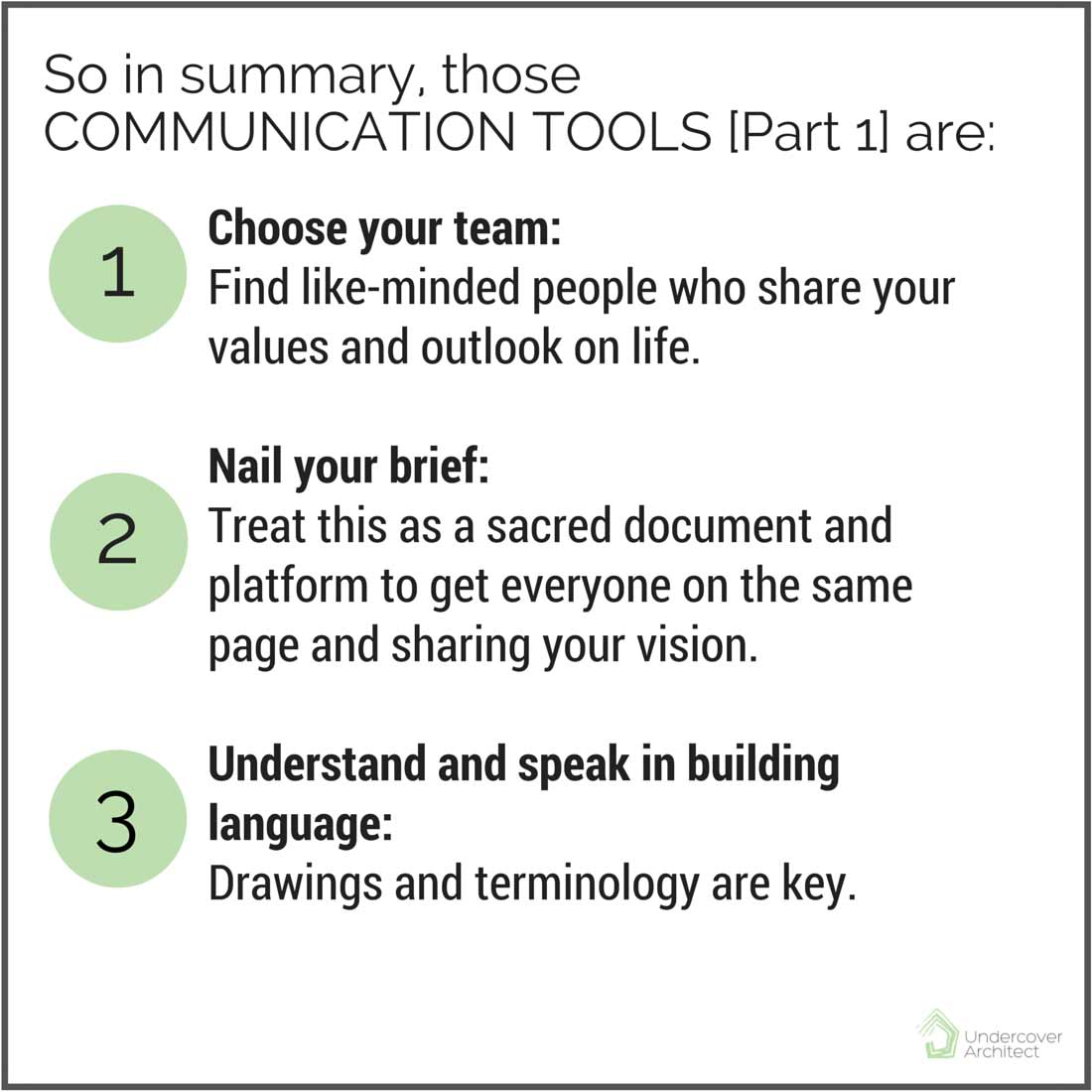
 With over 30 years industry experience, Amelia Lee founded Undercover Architect in 2014 as an award-winning online resource to help and teach you how to get it right when designing, building or renovating your home. You are the key to unlocking what’s possible for your home. Undercover Architect is your secret ally
With over 30 years industry experience, Amelia Lee founded Undercover Architect in 2014 as an award-winning online resource to help and teach you how to get it right when designing, building or renovating your home. You are the key to unlocking what’s possible for your home. Undercover Architect is your secret ally
And never forget the importance of keeping copies of all communicationss
Diary
Emails
Letters
Written confirmation of conversations.
If it all goes pear shaped the 3 most important things are
1 Records
2 Records
3 Records
Yes Brian – you’ll have to read Part 2 where I go into more detail about record keeping – especially during construction. Thanks for your comment – Amelia, UA
I’m really enjoying the design and layout of your website.
It’s a very easy on the eyes which makes it much more pleasant for me to
come here and visit more often. Did you hire out a developer to create your theme?
Great work!
Hello! Thank you so much for your kind comment and feedback about the new-look website! I really appreciate it.
Yes, I had a local (Northern NSW) web designer (Carl at C55) create the theme and set up the site for me. He also did the new logo design. It was great to work with him.
I hope you find Undercover Architect really useful if you’re designing, building or renovating – I look forward to having you visit often.
Amelia, UA x